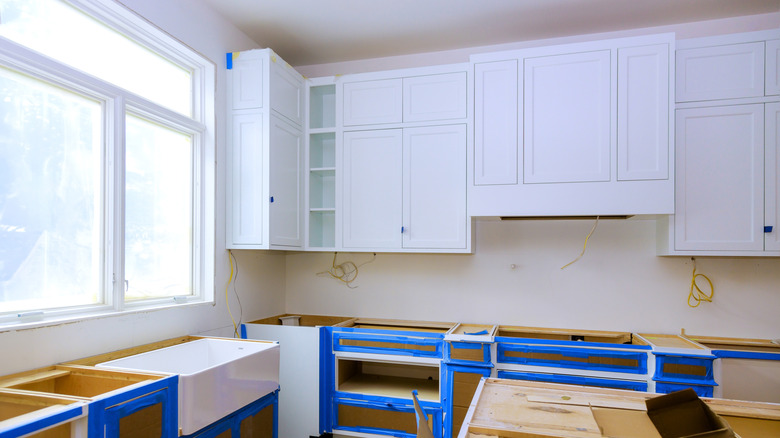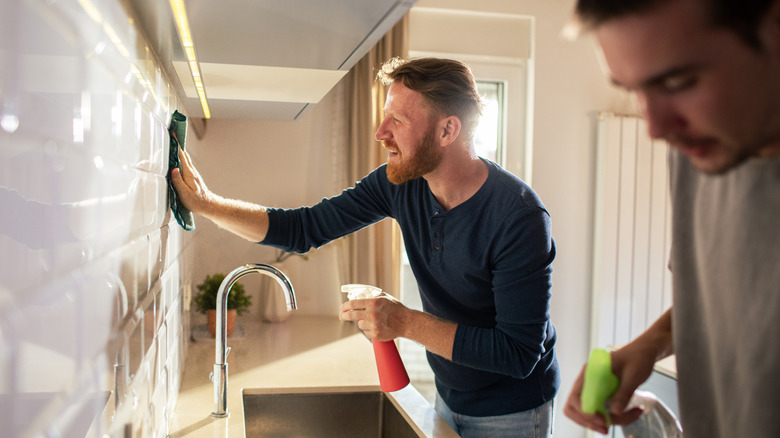Avoid This Common Mistake When Painting Your Kitchen
Being ready to upgrade your kitchen with a new paint job requires more than just knowing the best paint brands for cabinets or picking out compatible counter materials. According to Rick Berres, owner of Honey-Doers, it requires real preparation and cleaning if you want your work to stick around and look great.
"You want to make sure that your surface is stripped of all dirt and oils, that's going to give the paint a clean slate to adhere to," Berres explained. "Otherwise, you may find that your paint doesn't stick properly, peels off, or doesn't go on smoothly or uniformly." This built-up gunk acts as a divider between the wall and your paint, meaning you risk it bubbling up and possibly chipping as time goes on. Overall, this could sabotage the integrity of even a mostly clean wall, creating a weak point that steadily grows larger.
This goes double for high-traffic areas, like if you want to paint kitchen countertops, along trim, or by light switches. These areas get more use than the blank spot on your wall, so they need to be perfect unless you want to give them another coat in a couple of years. Fortunately, you don't need to power wash your kitchen to prepare for a new look. A fresh coat of paint is a great way to easily and cheaply update your kitchen, and keeping things simple is the best way to maximize your work.
How to clean your kitchen for a new paint job
If you're worried about the prep work for painting your kitchen, rest assured — you won't need any special tools, cleaners, or skills. Provided you have dish soap, vinegar, baking soda, and rags on hand, then you've already got everything you need.
"For grease, dishwashing liquid is honestly the best, because it's literally made to cut through grease," said Rick Berres. Even after you paint, dish soap is perfectly safe on the right types, including gloss, latex, and oil-based varieties. For matte paint, however, you might want to stick with just a cloth. Matte paints are fairly delicate, and even water can leave them stripped, peeling, or otherwise ruin them.
Berres also recommended using a mixture of vinegar and baking soda on stubborn stains when you prep your surface. "You want to let the substance sit on the surface for a while to make sure that it's completely stripped and ready to go," he said. "You can then rinse and let it dry completely, and only then should you start applying paint." If you don't let a surface dry, you risk making your paint run, set unevenly, or you may even dilute its color. Try giving your kitchen a full 24 hours to air dry before you start painting for the best results.


